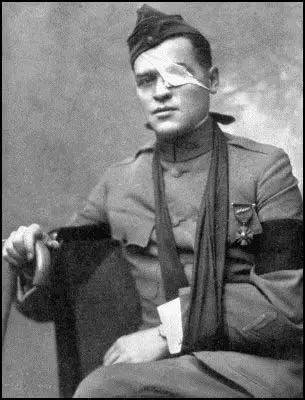War established a pattern of an eager public and a political strategy of feeding demand: a shrewd awareness of the power of the press.
In today’s day and age, the press is often covering news on the front lines of war. But the ability to be on the front lines as a journalist was not possible in World War I. WWI was badly reported which can be due to censorship, propaganda and fabricated stories.
False stories featuring the Germans as barbarians were published in the newspaper. The government tried to control reporters from getting any war information and , if they were to obtain information – keep them from publishing stories.
Reporters lurking for stories on the front line were considered “journalistic outlaws“, and were subsequently arrested. Two such journalists arrested were the Daily Chronicle’s Philip Gibbs and the Daily Mail’s Basil Clarke.

Floyd Gibbons. Image from http://spartacus-educational.com/Jgibbons.htm.
Another journalist working the front lines was Floyd Gibbons with the Chicago Tribune. In June 1918, he was in a wheat field with some Marines near Lucy-le-Bocage, France, when he came under heavy machine gun fire. He dropped and the marine next to him saw Gibbon’s eyeball roll down his face.
“The ‘bullet took out his left eye, fractured his skull and exited, ripping a three-inch hole in the right side of his helmet.'” Gibbons laid in the wheat field all day until medics came. He insisted that he not be treated before the wounded who came in before him.
Gibbons recovered, wore an eye patch and was back reporting on the front lines by July. He continued on to cover war communism in Russia. He died at age 52, of a heart attack.
Journalists who are able to cover war news on the front line, owe a lot to Floyd Gibbons.

Leave a response